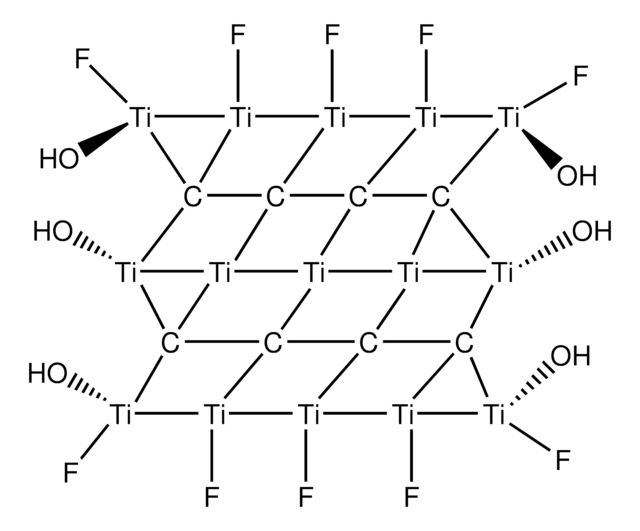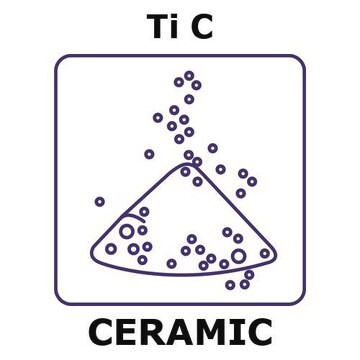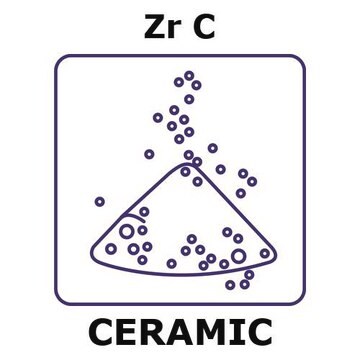636967
Titanium carbide
nanopowder, ≤200 nm particle size (SEM)
Synonyme(s) :
Titanium(IV) carbide
About This Item
Produits recommandés
Forme
nanopowder
Taille des particules
≤200 nm (SEM)
Point d'ébullition
4820 °C (lit.)
Pf
3140 °C (lit.)
Densité
4.930 g/mL at 25 °C (lit.)
Masse volumique apparente
0.45 g/mL
Chaîne SMILES
[C-]#[Ti+]
InChI
1S/C.Ti/q-1;+1
Clé InChI
YXIVWSJCLXKLJL-UHFFFAOYSA-N
Vous recherchez des produits similaires ? Visite Guide de comparaison des produits
Catégories apparentées
Application
- Conductive two-dimensional titanium carbide ′clay′ with high volumetric capacitance: This study demonstrates the high volumetric capacitance of titanium carbide (Ti3C2) films, which are produced by etching aluminum from titanium aluminum carbide (M Ghidiu et al., 2014).
- Unique lead adsorption behavior of activated hydroxyl group in two-dimensional titanium carbide: The research highlights the lead adsorption capabilities of 2D titanium carbide due to activated hydroxyl groups (Q Peng et al., 2014).
- Transparent, flexible, and conductive 2D titanium carbide (MXene) films with high volumetric capacitance: This article describes the synthesis and properties of transparent and flexible 2D titanium carbide films, which exhibit high volumetric capacitance (C Zhang et al., 2017).
Code de la classe de stockage
11 - Combustible Solids
Classe de danger pour l'eau (WGK)
WGK 1
Équipement de protection individuelle
Eyeshields, Gloves, type N95 (US)
Certificats d'analyse (COA)
Recherchez un Certificats d'analyse (COA) en saisissant le numéro de lot du produit. Les numéros de lot figurent sur l'étiquette du produit après les mots "Lot" ou "Batch".
Déjà en possession de ce produit ?
Retrouvez la documentation relative aux produits que vous avez récemment achetés dans la Bibliothèque de documents.
Les clients ont également consulté
Articles
Among various ceramics, one-dimensional (1-D) piezoelectric ceramics have attracted significant scientific attention for use in energy harvesting.
Notre équipe de scientifiques dispose d'une expérience dans tous les secteurs de la recherche, notamment en sciences de la vie, science des matériaux, synthèse chimique, chromatographie, analyse et dans de nombreux autres domaines..
Contacter notre Service technique












